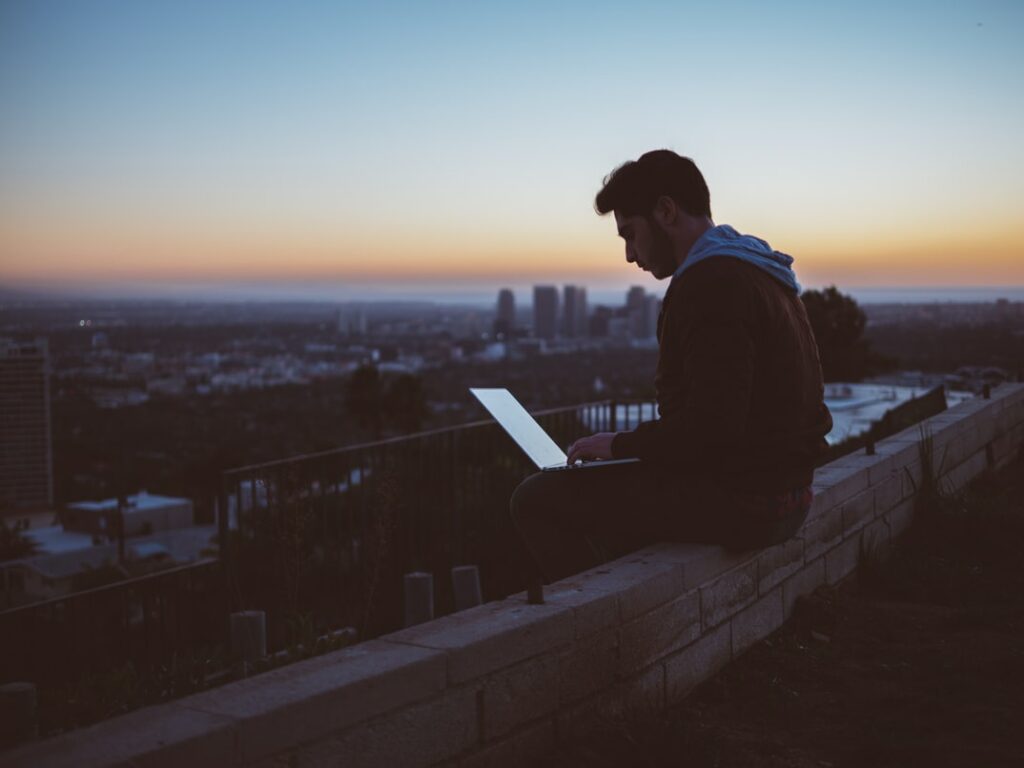 Which would you prefer? An employee who spends 60 hours a week at the office? Or someone who works smarter: accomplishing the same amount of work in just 30 hours?You’d go with the latter, right? When people can achieve goals faster, there’s more time to brainstorm big ideas and go after loftier goals with a productive team of happy employees.So why do American employers still reward long hours and expect 24/7 access? Despite proof that shorter work days can lead to better service, many U.S. businesses still measure success by time spent at the office. Here’s what one productivity expert had to say about that:“From a productivity perspective, do I think an employee can accomplish in six hours what normally gets done in eight? Yes…Especially if [they’re] working from home. Under circumstances that limit distractions, every worker can be more efficient.”At companies where it’s possible to adjust policies and procedures, there’s a lot managers can do to encourage people to work smarter. In this article, I’ll show you ways to replace common and inefficient habits with more productive workplace alternatives.
Which would you prefer? An employee who spends 60 hours a week at the office? Or someone who works smarter: accomplishing the same amount of work in just 30 hours?You’d go with the latter, right? When people can achieve goals faster, there’s more time to brainstorm big ideas and go after loftier goals with a productive team of happy employees.So why do American employers still reward long hours and expect 24/7 access? Despite proof that shorter work days can lead to better service, many U.S. businesses still measure success by time spent at the office. Here’s what one productivity expert had to say about that:“From a productivity perspective, do I think an employee can accomplish in six hours what normally gets done in eight? Yes…Especially if [they’re] working from home. Under circumstances that limit distractions, every worker can be more efficient.”At companies where it’s possible to adjust policies and procedures, there’s a lot managers can do to encourage people to work smarter. In this article, I’ll show you ways to replace common and inefficient habits with more productive workplace alternatives. Work Smarter with Jell
Daily Standups, Check-ins, & OKRs.
14-day free trial. No credit card required.
Related Articles
The Secret to Running Successful Meetings
The Science of Productive Meetings: Quality Over Quantity
The One on One Meeting: What Every Manager Should Know
The Types of Motivation
 There’s conflicting information around the internet about how many types of motivation exist. Some say 5, some 9, and some 4, but the consensus is that there are two main types of motivation. These are:
There’s conflicting information around the internet about how many types of motivation exist. Some say 5, some 9, and some 4, but the consensus is that there are two main types of motivation. These are:- Intrinsic motivation– personal challenges, job satisfaction, self-fulfillment
- Extrinsic motivation – physical rewards, salary, bonuses, gifts
- Taking that painting class you’ve always wanted to take
- Setting a personal goal at the gym
- Finding fulfillment in your friendships
- Working after-hours because your boss expects you to
- Working extra hard because you’re guaranteed a bonus
- Exercising to look good and not just feel good (to abide by societal expectations of weight)
How to Help Employees Work Smarter
Provide opportunities for easy communication
Effective communication in the workplace leads to a myriad of benefits like increased worker productivity, increased job satisfaction, and a positive impact on absenteeism. In workplace environments with ineffective communication, the opposite is true. Employees want to feel seen and heard. Research also shows that lateral work and group communication improves company performance and productivity.A few communication techniques for the workplace include: Daily Stand-Up Meetings: Daily stand-up meetings are made easier with Jell. Jell seamlessly integrates with Slack so you can stay in sync with your team whether you’re in the office or working remotely. Set frequency by choosing any combination of days in a week, or specific days each month. You can also check in with your team periodically either by sharing goal analytics in real time or prepping for your next one-on-one meeting. Set up weekly or biweekly check-ins with your employees. This way, meetings are intentional, succinct, and collaborative. One-on-One meetings are especially helpful to boost communication in the workplace. Checking in with your employees helps remove roadblocks and provide regular status updates. Eliminate poor work performance before it infects your workplace and use the meetings as opportunities to pulse check how your employees are feeling at work.
You can also check in with your team periodically either by sharing goal analytics in real time or prepping for your next one-on-one meeting. Set up weekly or biweekly check-ins with your employees. This way, meetings are intentional, succinct, and collaborative. One-on-One meetings are especially helpful to boost communication in the workplace. Checking in with your employees helps remove roadblocks and provide regular status updates. Eliminate poor work performance before it infects your workplace and use the meetings as opportunities to pulse check how your employees are feeling at work.Provide a motivational platform
Use daily Slack updates to motivate employees. Gauge where your team is and adjust accordingly. Set your goals as a team and view them all in one place. Seeing other employees’ progress will inspire your team to work harder. Every member of your team feels appreciated because their work is being recognized and seen, a boon to motivation.Improve Team Culture
Building and maintaining company culture isn’t as easy as you’d think. But it’s the backbone of your company and perhaps the most important of this entire list. Culture experts Lindsay McGregor and Neel Doshi state, “Why we work determines how well we work.” 40% of job candidates search for information about organizational culture before they apply for a job.This means that team culture isn’t just an overused buzzword. It’s become integrated with a company’s identity and values. If your company is one that prioritizes goal setting, then your employees are more likely to meet their own goals. If your company is people-forward and gives great benefits, your employees are going to feel appreciated. Company culture establishes the direction of your organization and employees. Also, strong company culture attracts and retains the best talent. When your employees feel appreciated and feel like they belong, they’re more likely to stay with your company long-term. This equates to lower turnover, less profit loss, and better chemistry among your team.Company culture also adds to your brand’s identity. Treat your employees well and your customers will begin to see your company as people-focused, fun-loving, and dependable. This can lead to brand loyalty and increased sales.Change the Environment
 Whether they’re crammed into cubicles or situated in private offices, desks can lead to disastrous consequences when people feel chained to them. There’s usually a direct correlation between mandated work hours and diminishing productivity returns. Even the popular open office concept can increase distractions that destroy attention spans and creative thinking.On the other hand, study after study has shown that remote employees are far more engaged and productive than their in-office counterparts. Give your trusted team members the option to work from home and coffee shops when needed, and you may be surprised at how much more they can accomplish.Bonus: Less money on partition accessories and pencil cups means more for shiny, transportable laptops.
Whether they’re crammed into cubicles or situated in private offices, desks can lead to disastrous consequences when people feel chained to them. There’s usually a direct correlation between mandated work hours and diminishing productivity returns. Even the popular open office concept can increase distractions that destroy attention spans and creative thinking.On the other hand, study after study has shown that remote employees are far more engaged and productive than their in-office counterparts. Give your trusted team members the option to work from home and coffee shops when needed, and you may be surprised at how much more they can accomplish.Bonus: Less money on partition accessories and pencil cups means more for shiny, transportable laptops.Turn unplanned meetings into agendas
The average big business will waste millions of dollars on unproductive meetings this year. Attendees will daydream, fall asleep, work on unrelated tasks and engage in mindless chatter.All of this can be reversed with a highly effective, timeless tool: the agenda. Decide ahead of time what you need to accomplish by the meeting’s end and build out talking points to keep everyone on topic. If you can’t easily create an agenda, don’t hold a meeting. Instead, do some research and spend time turning your half-formed thought into an actionable idea that warrants group discussion.Bonus: Using online standups to set priorities each day helps ensure meetings are devoted to the important stuff.Turn emails into real time messaging
How much of the typical team’s communication would you guess occurs via email? Try 91%. What’s worse is that after sorting through reply-all threads, attending mindless meetings and dealing with other interruptions, the average American employee spends just 45% of time at the office doing actual work.Enter real-time messaging. Tens of thousands of teams are turning to Slack, HipChat and Flowdock—and with good reason. These tools allow for real-time communication so team members can get questions answered quickly and keep projects from stalling.Bonus: With fewer book-length emails to write, you could publish an actual book!Turn status updates into measurable results
One of the biggest challenges managers face is staying up-to-date on what everyone’s doing. On the one hand, it’s easy to tally up all the tasks someone’s tackling. And on the other hand, you don’t want to micromanage.That’s where objectives and key results (OKRs) come in. The method popularized by Intel and Google is a great way to keep teams in sync and ensure everyone’s working toward the same company objectives. It also makes it easier to measure what matters (achieving actual goals) versus what doesn’t (busywork).[/et_pb_text][et_pb_text _builder_version=”4.14.4″ background_size=”initial” background_position=”top_left” background_repeat=”repeat” global_colors_info=”{}”]Give employees autonomy
Studies show that workplace autonomy increases an employee’s job satisfaction, motivation, productivity, and creativity at work. Employee autonomy doesn’t mean letting employees do what they want, when they want, fully independent. It isn’t working in complete isolation or doing work without any guidance or supervision. Autonomy allows individuals to work in ways conducive to their own best performance. Promoting autonomy empowers employees to be stewards over their work and their environment. It’s providing support instead of exerting control. When employees feel trusted, they perform better.Autonomy:- Increases productivity and cuts labor costs. Micromanaging your employees wastes your own labor hours and slows employees down in the long run for their respective tasks. Increasing autonomy allows you to focus on essential tasks.
- Leads to greater work engagement
- Leads to accountability and increased performance
- Makes employees feel valued
- Makes employees feel motivated to learn new skills
- Allows for a greater sense of team and organizational culture
Encourage risk taking
Risk-taking in the workplace leads to better workplace outcomes than risk-aversion. In one study, two experiments showed that, in comparison to risk-avoidance, workplace outcomes were enhanced by successful risk-taking. Failure didn’t appear to harm expected workplace outcomes for risk-takers. Some tips to encourage risk taking:- Ask your employees for their input. You can ask them during your weekly one-on-one meetings, or during a team meeting. Some individuals won’t want to share input in front of the entire group so it’s best to make accommodations for those who feel more comfortable airing their suggestions in private.
- Reward risk-taking. Even calculated risks can fail sometimes. Let your staff know you understand this and want them to take risks anyway. Let them see that taking a smart risk won’t be criticized but encouraged.
Hire the right people for the job
 Managing employees in your company is going to take time. That comes with the territory. Dealing with poor performance, though, can take up to 70% more time than good performance. Not only that, but hiring the right people right now lowers the number of individuals you need to hire in the future. From a monetary standpoint, hiring the right people makes the most logical sense. Don’t just “go with your gut” when choosing a candidate. Sometimes, your gut can be wrong and bad employees can present themselves well during the interview process. Hiring the wrong person can cost your company 25% of the annual salary for the role you’re attempting to fill. Hire the most qualified candidates and heavily vet each and every one of them, if you have the time.
Managing employees in your company is going to take time. That comes with the territory. Dealing with poor performance, though, can take up to 70% more time than good performance. Not only that, but hiring the right people right now lowers the number of individuals you need to hire in the future. From a monetary standpoint, hiring the right people makes the most logical sense. Don’t just “go with your gut” when choosing a candidate. Sometimes, your gut can be wrong and bad employees can present themselves well during the interview process. Hiring the wrong person can cost your company 25% of the annual salary for the role you’re attempting to fill. Hire the most qualified candidates and heavily vet each and every one of them, if you have the time.Encourage work/life balance
Sure, it’d be great to have your employees work 24/7 to move your company forward, furthering your goals, but is that really conducive in the long run? Of course not. One way to promote this? Do it yourself. When you’re on vacation, don’t check in with your employees. Enjoy your vacation. Then, your employees will use this as an example. But also, when they’re on vacation, don’t message them. Encourage them to turn their work cellphones off and make the most of their vacation time. Other ways to promote work/life balance:- Allow your employees to work remotely. The COVID-19 pandemic changed the way companies view office space and remote work. Companies like Apple allow employees to telecommute. Studies show that workers are up to 13% more productive working remotely compared to working at the office.
- Aim for efficient work, not more work. Working more and productivity aren’t cut from the same cloth. In Europe, the United Kingdom has the longest working hours and yet has lower productivity than their European neighbors. Working long hours can also decrease morale–27% of employees feel depressed, 24% feel anxious, and 58% feel irritable. Again, the main point of this article is to work smarter not harder.
- Promote health and fitness. Prioritizing health is an integral part of work/life balance. Long work hours (and also, long commutes) force employees to sacrifice their health and fitness. Oftentimes they are too tired to exercise after work or prepare meals on the weekends or even grocery shop. But, you can make this easier for them. Offer discount gym memberships or hold optional workout classes before or after work, or even during work hours, or even sponsor company sports teams. Whatever you do, get your employees moving!
 As you can see, there are many ways to make some changes on your team. Encouraging your employees to work smarter and not harder will benefit everyone in the long run. More work doesn’t mean more productivity and squeezing every last morsel of energy out of your employees only means they’re not going to have any left when they come into work the next day or week.
As you can see, there are many ways to make some changes on your team. Encouraging your employees to work smarter and not harder will benefit everyone in the long run. More work doesn’t mean more productivity and squeezing every last morsel of energy out of your employees only means they’re not going to have any left when they come into work the next day or week.
Jell Makes Motivating Your Team Easier
